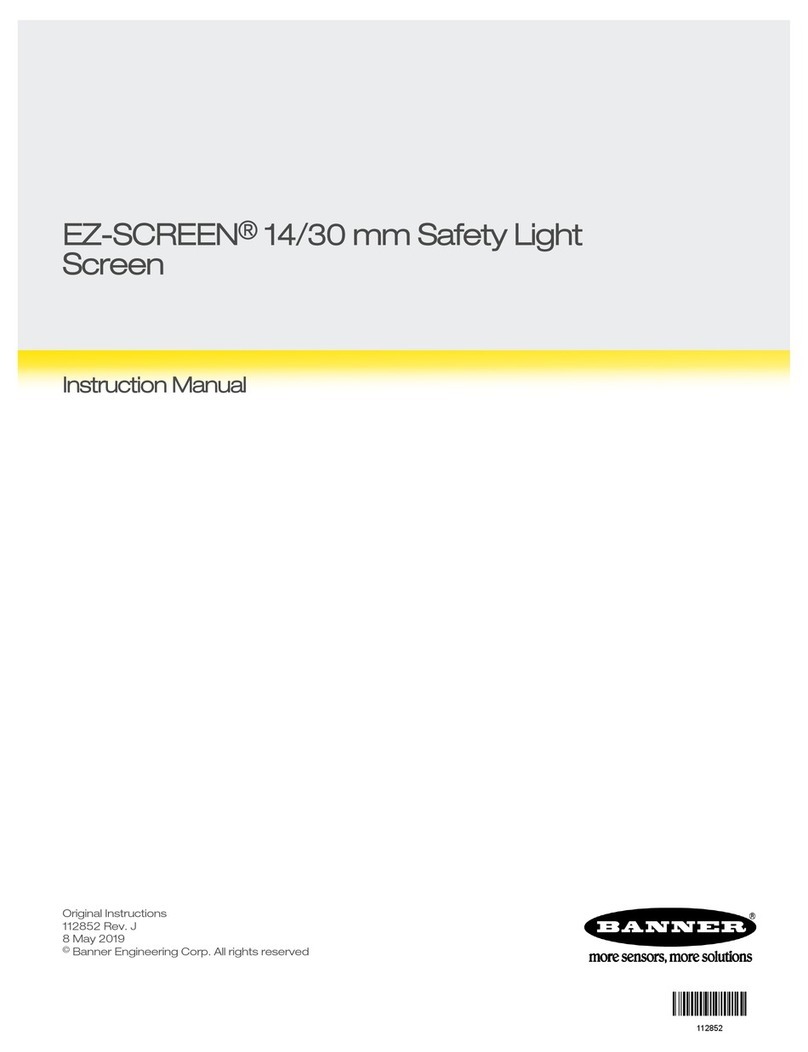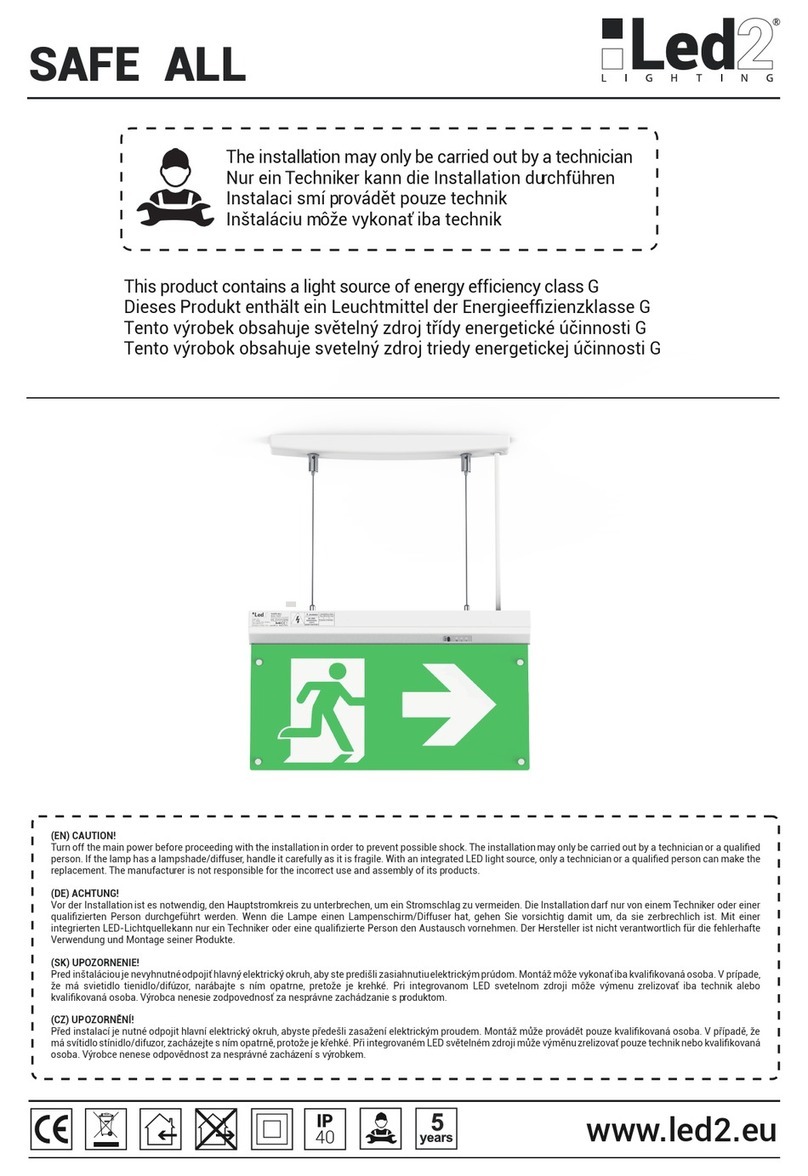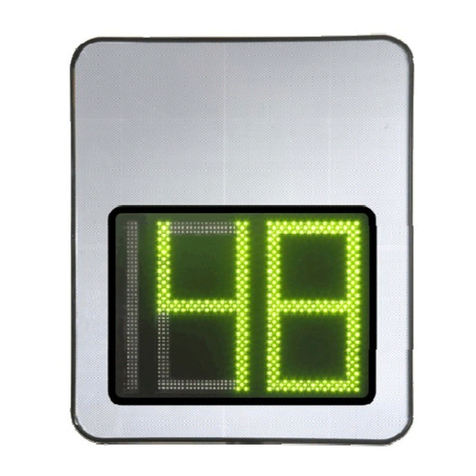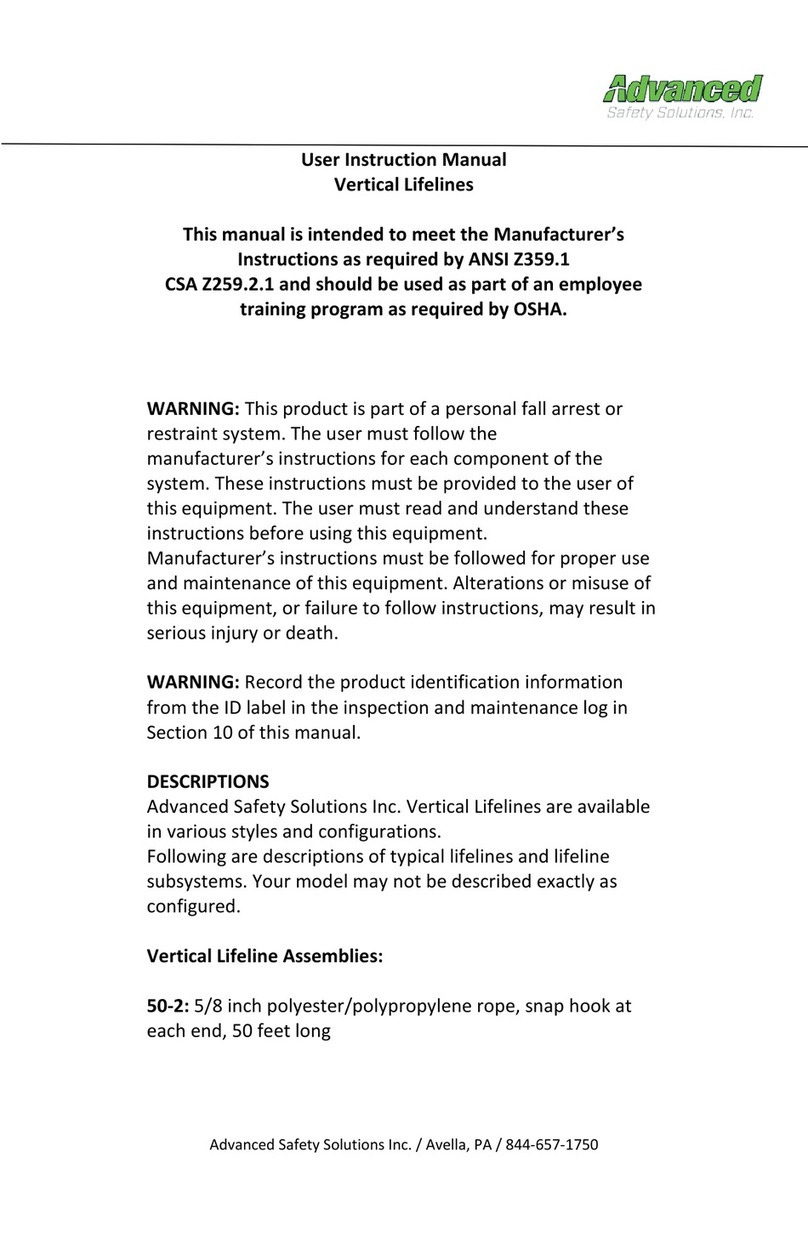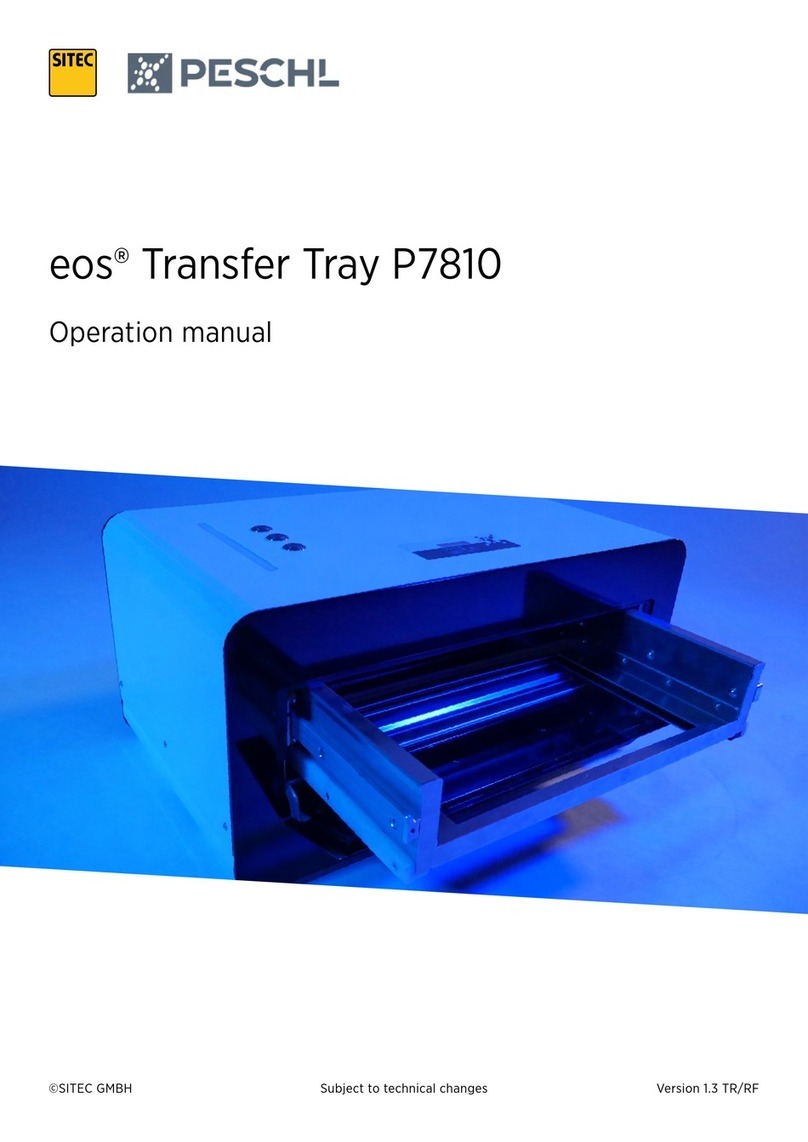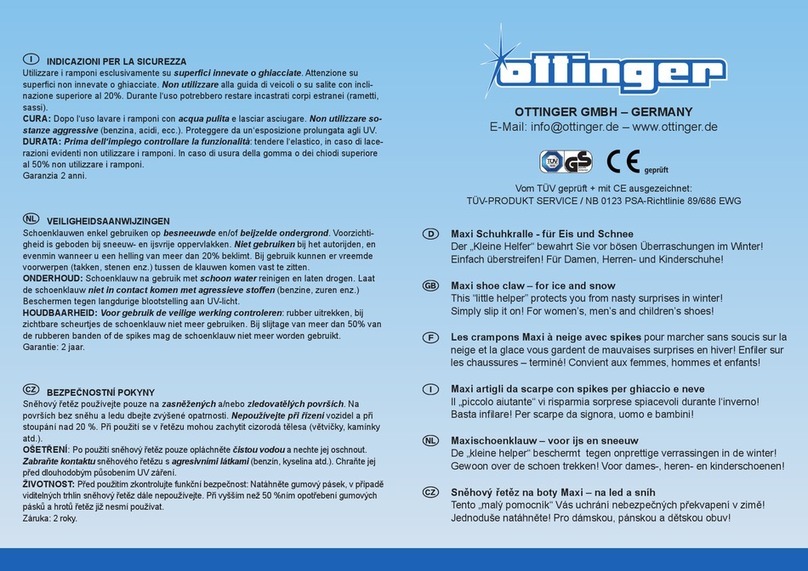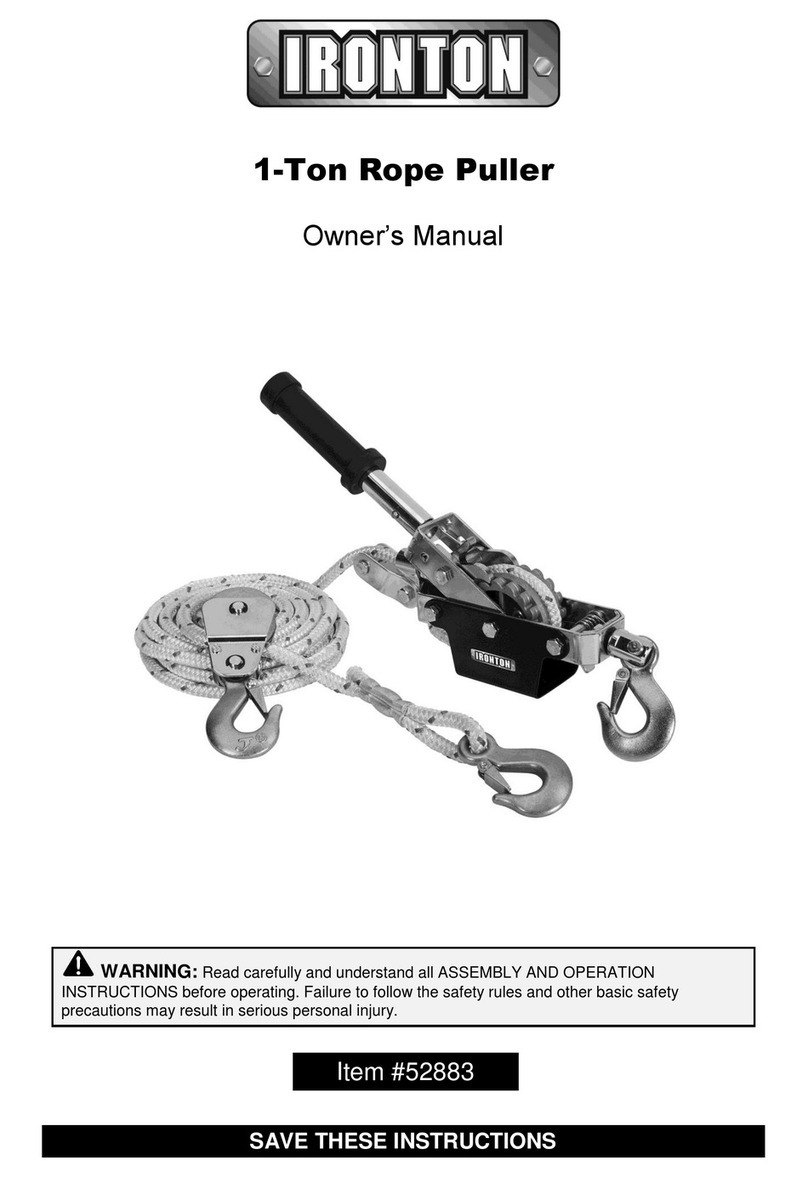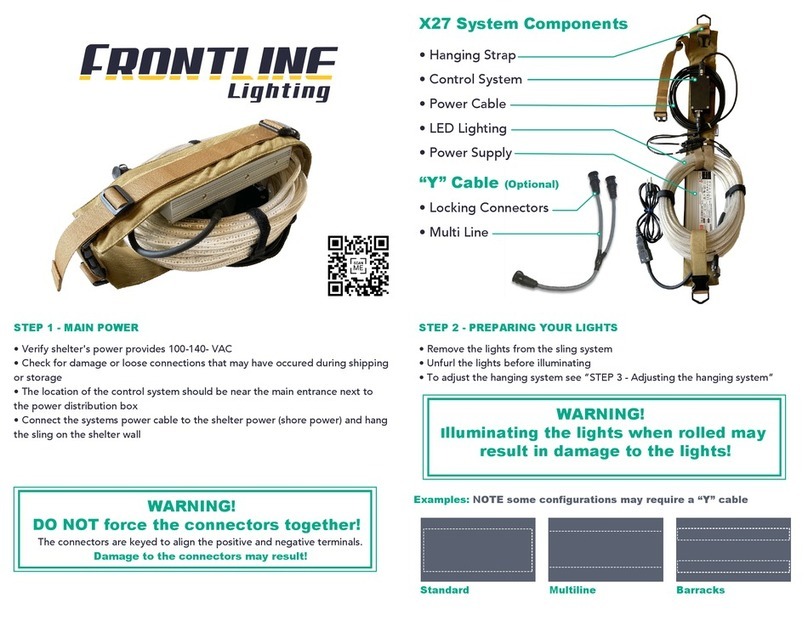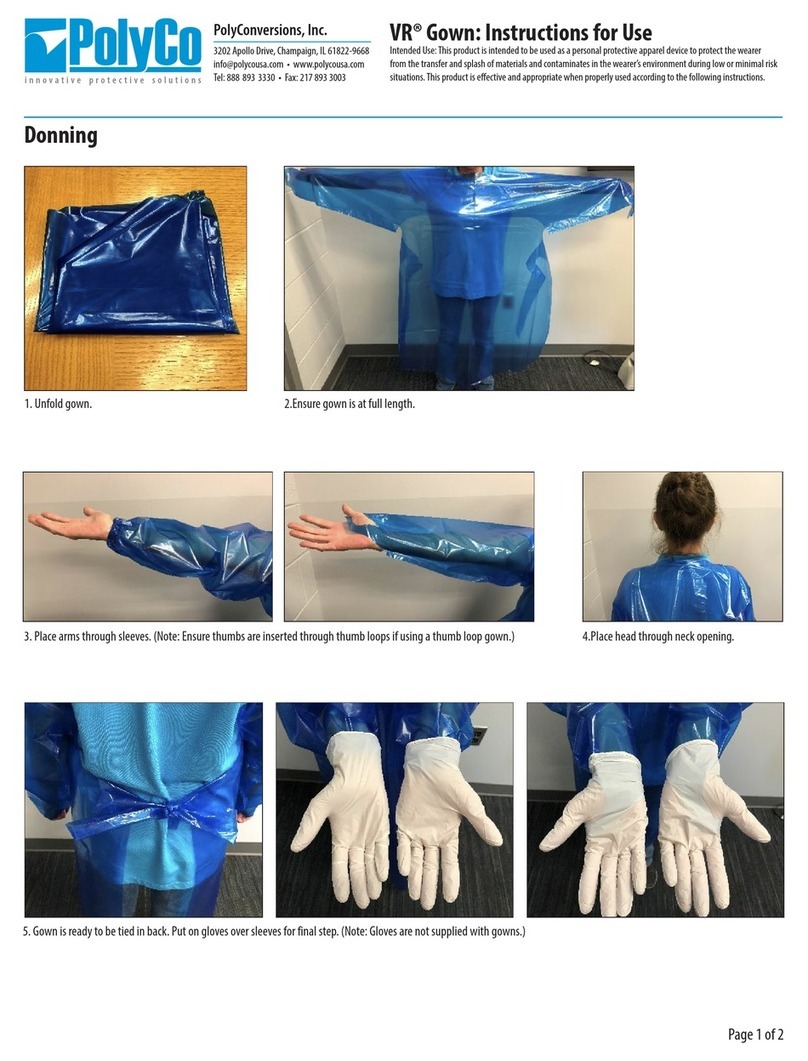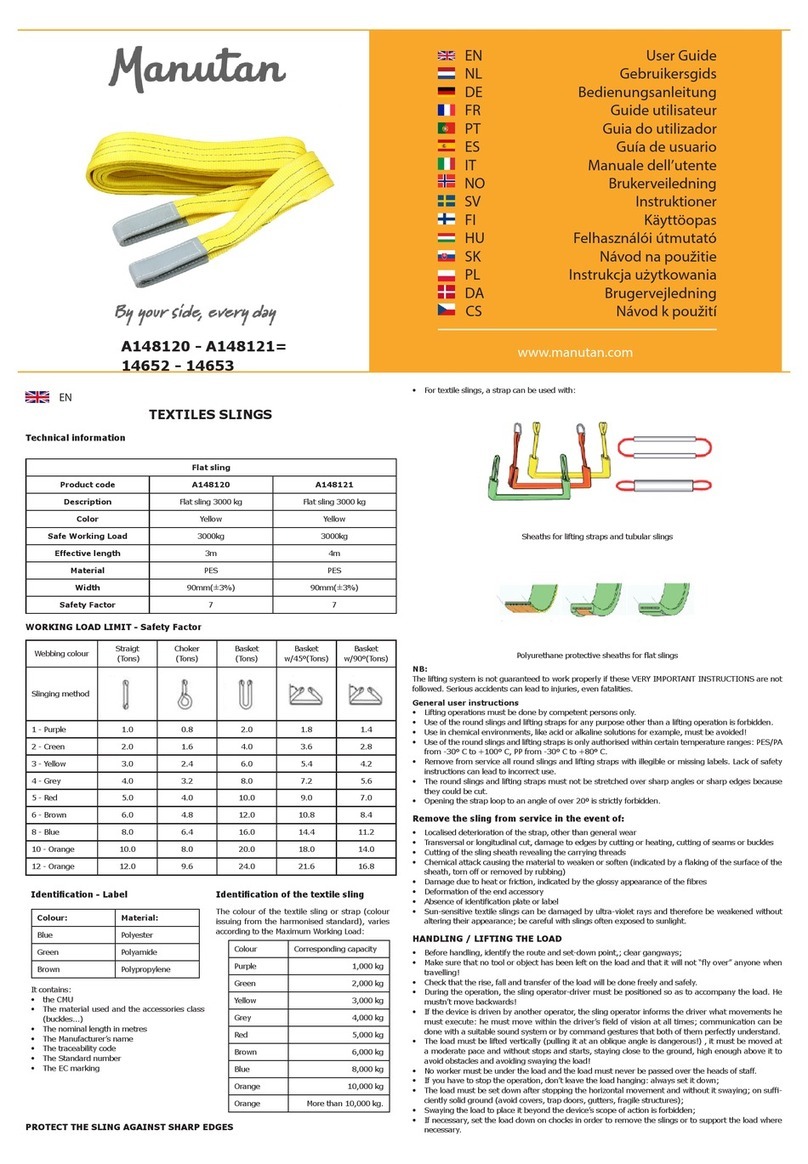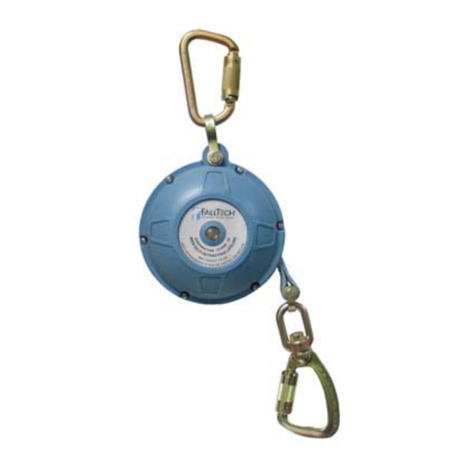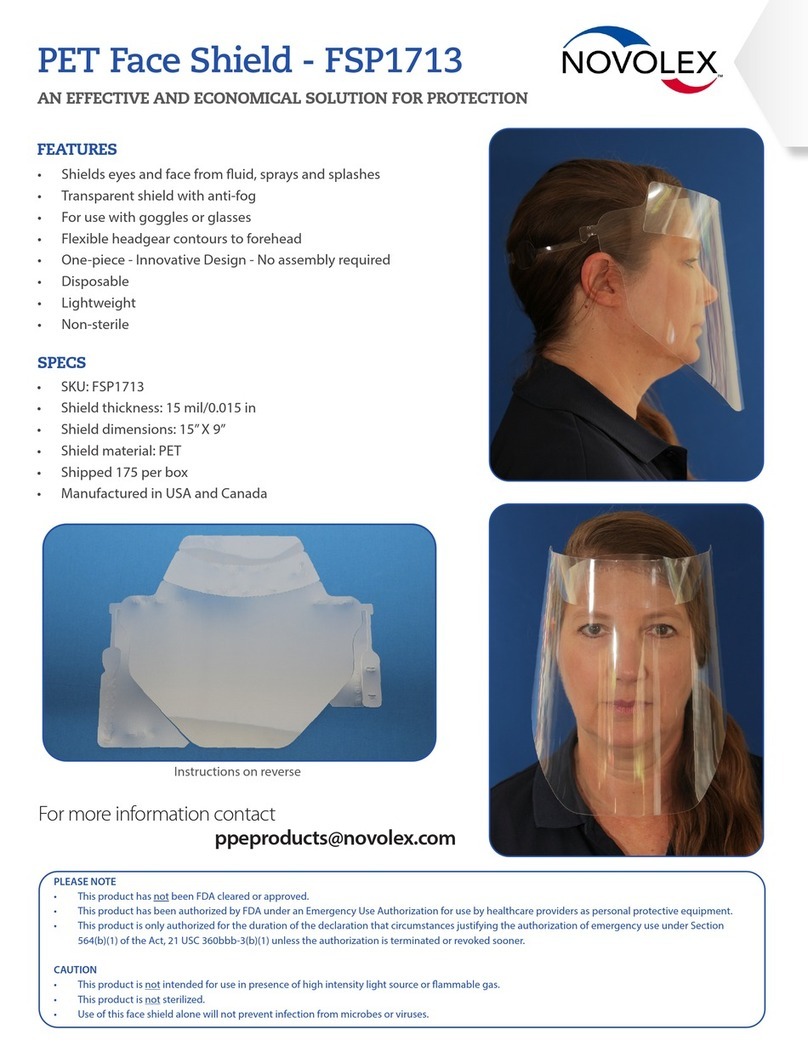Reliable DDX PrePaK Maintenance manual

Reliable Automatic Sprinkler Co., Inc., 103 Fairview Park Drive, Elmsford, New York 10523
Model DDX PrePaK™,
Type D Preaction System
2” (50mm), 2-1/2” (65mm), 3”
(80mm), 4”(100mm),
6” (150mm) & 8” (200mm)
Bulletin 733 January 2020
Bulletin 733 January 2021
Instructions for
Installation, Operation,
Care and Maintenance
10 PSI (0.7 bar) Pneumatic Supervising Pressure
Single Interlock - Electric Release
Double Interlock - Electric/Electric Release
General Description
The Reliable Model DDX PrePaK system is a completely self-con-
tained, supervised preaction system that can be readily installed
within a floor space of 4.7 ft2(0.43 m2) for the 2”, 2-1/2”, and 3”
systems, and 6.5ft2(0.60m2)for the 4”, 6”, and 8” systems (not in-
cluding door swing). Installation of the PrePaK system (not includ-
ing exterior devices, i.e., detectors and alarm bells) requires three
piping connections: the water supply, the sprinkler system, and the
drain. Reference locations of these piping connections are shown
in Fig.1. Two electrical supply connections are required. Note: The
Model DDX PrePaK system is available with an optional 115V VAC
(60Hz) air compressor and an optional Potter Model PFC-4410-RC
Releasing/Control panel wired for a 120 VAC (50Hz) or 220 VAC
(50/60Hz) power supply.
Full assembly drawings for the units are available on the Reli-
able Automatic Sprinkler Company website (www.reliablesprinkler.
com).
The Reliable Model DDX PrePaK system utilizes an optional Potter
Model PFC-4410-RC Releasing Control Panel. This fully program-
mable, microprocessor-based releasing panel is Underwriters Lab-
oratories, Inc. Listed and is in compliance with NFPA 13 and NFPA
72. The PFC-4410-RC is totally zone and output programmable
such that the Reliable Model DDX PrePaK system can be utilized
in many different preaction applications without having to rewire
any of the factory installed devices. Once the previously described
connections are completed, the 24 VDC detectors, output devices,
and relay contacts may be connected to achieve the desired sys-
tem implementation.
The Model DDX Type D PrePaK system can be used in both sin-
gle and double interlock applications. Reliable Single and Double
Interlock Preaction Systems are designed for water sensitive areas
that require protection from inadvertent water flow into the sprinkler
system piping.
The major benets of a single/double interlock preaction System,
when compared with a wet pipe system, are as follows:
A. A re alarm sounds prior to the flow of water from a sprinkler,
which may enable extinguishing the re by handheld means
before the operation of any sprinkler occurs.
B. An annunciator signals whenever the integrity of piping or
sprinklers is accidentally or intentionally disturbed; however,
no water flow occurs unless the detection system has been
activated .

2.
C. Detection and notication of a re condition are provided by
re detectors, without the delay associated with water delivery
time in the event of a re. Note that with a wet pipe system, the
re alarm is delayed until after water has begun flowing from an
operated sprinkler.
In single interlock applications, one or more detectors sense the
presence of re, thereby causing the electrical releasing control
panel to activate notication appliances and energize the solenoid
releasing valve to the open position. The use of cross-zoned de-
tectors will require operation of two detectors on separate zones
before the solenoid valve can open (Note: Verify that the detection
method, including the use of cross-zoned detection, are permitted
by all applicable codes and standards, as well as the requirements
of all authorities having jurisdiction. Cross-zoned detection may not
be permitted in New York City or by Factory Mutual.) The solenoid
valve, when closed, preserves supply water pressure in the Model
DDX valve’s push-rod chamber. Actuating the solenoid valve re-
leases that water pressure which allows the Model DDX valve to
open.
To discharge water from sprinklers on a single interlock system
with cross-zoned detection, two separate electrical detection zone
must activate and a sprinkler must open. During the early stages
of a re, smoke or heat activates the rst detector, which causes
the control panel to produce a local alarm and an alarm at the re
alarm panel. Electrical relays inside the releasing control panel can
be used to shut down air moving equipment or activate security
doors and other electrical devices when the panel goes into this
rst condition. Subsequent activation of a second, nearby or adja-
cent detector, on a separate detection zone, will cause the panel to
energize the solenoid valve open and release water into the sprin-
kler piping. Water flowing into the sprinkler piping will simultaneously
produce water pressure that cause the transfer of contacts in the
alarm pressure switch mounted in the riser assembly, thereby acti-
vating a water flow alarm device. The flow of water into the sprinkler
piping effectively converts the dry system into a wet-pipe sprinkler
system. In the event that the re subsequently produces sufcient
heat to operate a sprinkler, water will flow from that sprinkler.
To flow water into a double interlock preaction system, two events
must take place: a re detection device must operate, and a pres-
sure switch must be operated by the loss of system pressure (sprin-
kler operation). These two signals, an electric signal from the detec-
tion system and an electrical signal from the pressure (pneumatic)
sensor, must coexist at the releasing control panel, which only then
will energize the solenoid releasing valve causing water flow into the
sprinkler system and out of the open sprinkler(s).
In the event that the system piping is ruptured or a sprinkler is ac-
cidentally opened, the system pressure switch will operate and an
alarm will sound. The Model DDX Type D however, will not release
water since the detection system has not been activated.
When using the Reliable Model DDX PrePaK system in either sin-
gle or double interlock applications, the sprinkler system is pressur-
ized (supervised) with air or nitrogen and is monitored by a system
pressure switch.
A Model B Hydraulic Manual Emergency Releasing station is
standard equipment in the Model DDX PrePaK system. It consists
of an aluminum nameplate mechanically attached to a ball valve.
The valve handle in its OFF position is guarded against acciden-
tal turning to the ON position (and system discharge) by a nylon
cable tie provided with the PrePaK system assembly. The cable tie
is designed to allow, in case of an emergency, forceful turning of the
valve handle to the ON position.
Approvals
1. Underwriters Laboratories, Inc. Listed and Certied for Cana-
da* (cULus) as an assembled unit in the “Special System Wa-
ter Control Valves Assembled Units” category, (VKYL).
2. Factory Mutual (FM) Approved, as PrePaK Single Interlock
and Double Interlock Preaction Systems.
* Electrical devices and control panel must be specied to
meet Canadian requirements. This option is available.
3. Approved for use in New York City based on UL Listing.
Note: Although PrePaK system units are UL Listed, custom
built units are sometimes supplied upon request. The components
within these special units maintain their individual Listings/Approv-
als, whereas the assembled units do not.
PrePaK system units are also available without the Potter PFC-
4410-RC Releasing/ Control Panel and Air Compressor. These
units will still retain their Listings/Approvals, however the installing
contractor should make sure that any remote controlled Releasing/
Control Panels used with these units are Listed/Approved and pro-
grammed to handle the required sequence of operation necessary
to operate the automatic sprinkler system. Any unauthorized modi-
cation or addition made on-site to a factory-built Listed/Approved
unit will void the Listing/Approval. Such modications or additions
may void the unit’s warranty as well. Consult Reliable’s Technical
Services Department before proceeding with any such modica-
tions or additions.
Technical Data
1. The Reliable Model DDX PrePaK systems are rated for a mini-
mum supply pressure of 20 psi (1.4 bar) and a maximum sup-
ply pressure of 250 psi (17.2 bar).
2. Friction loss, expressed in equivalent length of Schedule 40
pipe and based on Hazen-Williams Formula with C=120 and a
flowing velocity of 15 ft/s (4.6 m/s), is:
System Size Equivalent Length
2” (50mm) 4.4’ (1.3m)
2-1/2” (65mm) 6.0’ (1.8m)
3” (80mm) 12.6’ (3.8m)
4” (100 mm) 32.8 ft (17.7 m)
6” (150 mm) 54.7 ft (21.8 m)
8” (200mm) 79.3ft (24.2m)
These values account for the Model DDX valve, supply mani-
fold tee, butterfly control valve, and the short section of pipe
located directly above Model DDX valve.
3. Shipping Weight:
System Size Weight
2” (50mm)
565 lbs (256 kg)2-1/2” (65mm)
3” (80mm)
4” (100 mm) 690 lbs (313 kg)
6” (150 mm) 850 lbs (386 kg)
8" (200mm) 940lbs (426kg)
4. Please reference Figure 1 for dimensions.

Fig. 1
3.

4.
The following is a list of Technical Data Bulletins which describe
the valves and devices which are used in the system:
Device Reliable Bulletin #
(unless otherwise noted)
Model DDX Deluge Valve Reliable Bulletin 519
Type D Double Interlock Preaction Trim Reliable Bulletin 750
Low Air Pressure Switch Potter 5400928
Alarm Pressure switch Potter 5400928
Nitrogen Pressure Switch Potter 5400930
Mechanical Sprinkler Alarm Reliable Bulletins 612/613
Releasing Control Panel Potter Manual #5403550
Fire Alarm Devices Reliable Bulletin 700
Desiccant Dryer Wilkerson Catalog 9EM-TK-190-4
The following table provides a quick reference to various pro-
grams (found in this bulletin and the Potter Manual #5403550) that
may be utilized with a Model DDX PrePaK system:
Desired Application Program
Single Interlock,
Single Zone
Potter Program #6
(Factory Setting)
Single Interlock, Cross
Zoned Potter Program #7
Single Interlock,
New York City Custom NYC Program
Double Interlock,
Single Zone Potter Program #9
Double Interlock,
Cross Zoned Potter Program #10
*Note: Factory Program setting.
Installation Requirements
The automatic sprinklers, releasing devices, re detection de-
vices, manual pull stations, and signaling devices which are utilized
with the Reliable Model DDX Type D PrePaK system must be UL
and/or ULC Listed or FM Approved, as applicable.
The steel enclosure and all the interconnecting piping must be
located indoors in a readily visible and accessible location and in
an area that can be maintained at a minimum temperature of 40°F
(4°C). Note: Heat tracing is not permitted. The solenoid valve is
operated and supervised by the Potter Model PFC-4410-RC Re-
leasing Control Panel. Details on the electrical connections of this
system to the Potter Panel can be found in the Potter Manual
#5403550, Installation, Operation and Instruction of PFC-4410-RC
Releasing Control Panel (this manual is included with other perti-
nent manuals and shipped inside the enclosure). This panel is fully
zone and output programmable and may be adapted to several ap-
plications.
Optional Seismic Kit
Reliable part number 6501200041 (25” x 28” cabinet for 2” -4”
systems without nitrogen generator) and 6501200042 (30” x 33”
cabinet for 6” and 8” systems, and all units with nitrogen genera-
tor) are seismic upgrade kits required to make the Reliable PrePaK
OSHPD compliant. One kit is required for each PrePaK (reference
Caution Sheet 331).
System Supervising Pressure Requirements
In accordance with NFPA 13, when using the Reliable Model DDX
Type D PrePaK system in double interlock applications, a minimum
of 7 psi (0.5 bar) pneumatic pressure is required to supervise the
sprinkler system. When initially lling the system with air, the enclo-
sure’s door should remain open in order to provide maximum intake
air flow to the air compressor. The air compressor is connected to
an ASME rated storage tank. This tank functions as a reservoir,
providing make-up air to compensate for small, intermittent leaks in
the sprinkler system. It should be noted that signicant leaks may
overburden this storage tank, thereby causing the air compressor
to continuously cycle on and off.
The Pressure Maintenance Device supplied with the system is
factory set to maintain system pneumatic pressure at approximately
10 psi (0.7 bar). Readjusting system pressure to approximately 10
psi (0.7 bar), if necessary, is accomplished by rst loosening the
locknut on the air pressure regulator and turning the adjustment
screw. The system air pressure gauge that is attached to the verti-
cal pipe/manifold (mounted directly above the Model DDX Deluge
Valve) may be used to verify the correct level of pneumatic pressure.
The system air pressure switch is factory set to operate between
8 psi and 4 psi (0.6 bar and 0.3 bar) with decreasing pressure.
System Electrical Requirements
All releasing, alarm, and detection devices in the Reliable Model
DDX Type D PrePaK system are supervised by a Potter Model PFC-
4410-RC Releasing Control Panel. All of the terminals are translated
to a water-tight terminal box mounted on the interior of the enclo-
sure. All eld wiring is connected to this terminal box. Note: The
EOL (End of Line) resistors have also been relocated.
The Reliable Model DDX PrePaK system is delivered with six fac-
tory-installed electrical devices. They consist of the following:
1. A system air pressure switch, which is used to monitor sprin-
kler piping.
2. An alarm pressure switch, which indicates an actuation of the
deluge valve.
3. A normally-closed, releasing solenoid valve, which is used to
actuate the deluge valve.
4. A 1/2 HP (2”, 2-1/2”, & 3” valve), 1 HP (4” valve), or 1-1/2 HP
(6” & 8” valve) air compressor with tank.
5. A supervised butterfly (main control) valve (Note: A system
side butterfly valve is available as an option).
6. A release control disable switch (RCDS) which is used
to disable the solenoid valve for test purposes.
The factory electrical connections of these devices, along
with information on the connection of detection devices
(initiating zones 1 and 2), signaling devices, and supervi-
sory outputs to the Potter PFC4420-RC Releasing Control
Panel are included in this bulletin. The power supply, stand-
by emergency power supply, battery charger and rectier
circuitry are all contained within the PFC4410 panel. Bat-
teries that provide 90 hours of standby power are provided
with the panel. For additional information and detailed wiring
diagrams, please refer to Potter Manual #5403550 (Installa-
tion, Operation, and Instruction of PFC4410-RC Releasing
Control Panel).
Note: In order for the solenoid valve to maintain a warranty it must
remain sealed as it came from the factory. If there are concerns
about the valve’s internal components, immediate replacement is
recommended.

5.
System Operation (Single Interlock)
To fully activate and discharge water from the Reliable Model DDX
Type D PrePaK system in a single interlock application, a re de-
tection device (smoke, heat, etc.; or two devices with cross-zoned
detection) must activate. Subsequently, a re sprinkler must open.
When the single interlock preaction system is set for service, the
supply pressure acts both on the underside of the deluge valve’s
clapper and on the valve’s push rod by means of the pressurized
push rod chamber. The pressure force acting on the push rod,
when utilized with the mechanical advantage of the deluge valve’s
lever, is more than sufcient to hold the clapper in the closed posi-
tion against the water supply pressure.
Energizing the releasing solenoid valve allows the deluge valve
push-rod chamber to be vented to drain. Since the pressure can-
not be replenished through the inlet restriction as rapidly as it is vent-
ed though the outlet, the push-rod chamber pressure falls rapidly.
When the push-rod chamber pressure drops below one-third of
the supply pressure, the opening force acting beneath the clapper
becomes greater than the push-rod force acting on the lever. This
causes the clapper to open. Refer to Reliable Bulletin 519 for further
details.
Once the clapper has opened, the lever acts as a latch, prevent-
ing the clapper from returning to the closed position. Water from the
supply flows through the deluge valve into the system piping. Wa-
ter also flows through the deluge valve alarm outlet to activate any
water flow alarm devices. Note that the solenoid valve will be main-
tained open by the Potter Model PFC-4410-RC Releasing Control
Panel’s latching feature until it is reset for operation.
After system shutdown and draining, the Model DDX Deluge
Valve is easily reset without special tools using the external reset
feature. Restore detection devices by resetting or replacing any
operated device. Once detection devices are restored, (the Potter
Model PFC-4410-RC Releasing Control Panel reset), and supply
pressure is re-supplied to the push-rod chamber, the deluge valve
is reset.
System Operation (Double Interlock)
To fully activate and discharge water from the Reliable Model
DDX Type D PrePaK system in a double interlock application, two
independent events must coexist. An electrical re detection de-
vice (smoke, heat, etc.) and the system air pressure switch must
be activated. This pressure switch is activated by a reduction of the
system pneumatic pressure as a result of sprinkler operation. Both
of these events will cause the control panel to energize the solenoid
valve, thereby releasing water through the deluge valve and into the
sprinkler system. The initiation of either one of these events will only
cause an alarm to annunciate, and will not ll the sprinkler system.
When the double interlock preaction system is set for service, the
supply pressure acts both on the underside of the deluge valve’s
clapper and on the valve’s push rod by means of the pressurized
push rod chamber. The pressure force acting on the push rod,
when utilized with the mechanical advantage of the deluge valve’s
lever, is more than sufcient to hold the clapper in the closed posi-
tion against the water supply pressure.
Energizing the releasing solenoid valve allows the deluge valve
push-rod chamber to be vented to drain. Since the pressure can-
not be replenished through the inlet restriction as rapidly as it is vent-
ed though the outlet, the push-rod chamber pressure falls rapidly.
When the push-rod chamber pressure drops below one-third of
the supply pressure, the opening force acting beneath the clapper
becomes greater than the push-rod force acting on the lever. This
causes the clapper to open. Refer to Reliable Bulletin 519 for further
details.
Once the clapper has opened, the lever acts as a latch, prevent-
ing the clapper from returning to the closed position. Water from the
supply flows through the deluge valve into the system piping. Wa-
ter also flows through the deluge valve alarm outlet to activate any
water flow alarm devices. Note that the solenoid valve will be main-
tained open by the Potter Model PFC-4410-RC Releasing Control
Panel’s latching feature until it is reset for operation.
After system shutdown and draining, the Model DDX Deluge
Valve is easily reset without special tools using the external reset
feature. Restore detection devices by resetting or replacing any
operated device. Once detection devices are restored, (the Potter
Model PFC-4410-RC Releasing Control Panel reset), and supply
pressure is re-supplied to the push-rod chamber, the deluge valve
is reset.
Resetting Single And Double Interlock Systems
1. Close the main valve controlling water supply to the deluge
valve and close the ¼” air shutoff valve.
2. Close the pushrod chamber supply valve.
3. Open the main drain valve and drain system.
4. Open all drain valves and vents at low points throughout the
system, closing them when flow of water has stopped. Open
the Manual Emergency Release Valve. Note: The above
steps accomplish the relieving of pressure in the pushrod
chamber of the deluge valve.
5. Push in the plunger of ball drip valve to force the ball from its
seat, and drain any water in the alarm line.
6. With the Model B Manual Emergency Station open, push in
and rotate the deluge valve external reset knob counterclock-
wise (when facing valve) until you hear a distinct clicking noise,
indicating that the clapper has closed. Note: The reset knob
can be rotated only after pressure in the pushrod chamber is
reduced to atmospheric conditions (0 psig).
7. Inspect and replace any portion of the sprinkler system sub-
jected to re conditions.
8. Verify that the following valves are in their respective positions:
Manual Emergency Release - open
Main Drain Valve - open
Alarm Line Valve - open
Alarm Test Valve - closed
Condensate Drain valve - closed
Air Supply Valves - closed
9. Open the pushrod chamber supply the valve and allow water
to ll the deluge valve pushrod chamber. Close the Manual
Emergency Release valve.

6.
10. Bleed any air from the actuation piping by energizing the so-
lenoid valve. This is done by operating the electric manual
release station. While water is flowing through the solenoid
valve, cause it to close by pressing the system reset button on
the Potter PFC-4410-RC Releasing Control Panel. Note: All
detection devices and the manual pull station must be reset
before the releasing/control panel can be reset.
11. Open the air supply valve to restore air pressure in the sprinkler
system. The rapid air-ll shutoff valve may be opened to expe-
dite lling of the sprinkler system.
12. Open slightly the main valve controlling water supply to the
Model DDX Deluge Valve, closing the main drain valve when
water flows. Observe if water leaks through the ball drip valve
into the drain manifold. If no leak occurs, the deluge valve clap-
per is sealed. Open slowly, and verify that the main valve con-
trolling water supply is fully opened and properly monitored.
13. Verify that the pushrod chamber supply valve is fully open.
14. Secure the handle of the Model B Manual Emergency Station
in the OFF position with a nylon tie (supplied with the assem-
bly).
15. Press the system reset button on the Potter PFC-4410-RC
Panel to place the system in the ready condition. Note: All
detection devices must be reset before the panel can be reset.
Maintenance
The Reliable Model DDX PrePaK system and associated equip-
ment shall periodically be given a thorough inspection and test.
NFPA 25, Standard for the Inspection, Testing and Maintenance of
Water Based Fire Protection Systems, provides minimum mainte-
nance requirements. Systems should be tested, operated, cleaned
and inspected at least annually, and parts replaced as required. Pe-
riodically open the air/condensate drain valve beneath the air tank
to drain any condensate accumulation. Bulletin 519 provides infor-
mation for maintaining the Model DDX Deluge Valve. Potter Manual
#5403550 provides information for maintaining the PFC-4410-RC
Releasing Control Panel.
Single Interlock, Single Detection Zone
Inspection And Testing Of Single And Double
Interlock Systems
1. Water supply — Verify that the valve controlling water
supply to the deluge valve is opened fully and properly
monitored.
2. Alarm line — Verify that the alarm line valve is opened
and remains in this position.
3. Other trimming valves — Verify that the pushrod
chamber supply valve is open as well as all of the pres-
sure gauge valves.
4. Ball drip valve — Push in on the plunger to be sure the
ball check is off its seat. If no water appears, the deluge
valve water seat is tight. Inspect the bleed hole on the
underside of the pushrod chamber for leakage.
5. System pneumatic pressure — Verify that system
air pressure is between 7 and 10 psi (0.5 bar 0.7 bar).
Check the Pressure Maintenance Device for leakage
and proper pressure.
6. Releasing device — Check the outlet of the releas-
ing device (i.e., solenoid valve or the Model B Manual
Emergency Station) for leakage. Also verify that tubing
drain lines from releasing devices are not pinched or
crushed which could prevent proper releasing of the
deluge valve.
7. Testing alarms — Open the alarm test valve permit-
ting water from the supply to flow to the alarm pressure
switch and to the mechanical sprinkler alarm (if pres-
ent). After testing, close this valve completely. Push
in on the plunger of ball drip until all of the water has
drained from the alarm line.
8. Operational test — Open the Model B Manual Emer-
gency Station only, OR operate the solenoid valve by
electrical actuation. This can be done by operating
a detector or an electric manual emergency station.
Double interlock systems also require that the system
air pressure be discharged, through the inspectors test
station or other venting means, below 4 psi (0.3 bar)
before total system operation will occur. Note: An op-
erational test will cause the Deluge Valve to open and
flow water into the sprinkler system.
9. Secure the Model B Manual Emergency Station in the
OFF position with a nylon tie (included with the assem-
bly) after the deluge valve is reset.
Testing The Model DDX PrePaK system
Without Causing Water Flow
1. Close the main valve controlling water supply to the deluge
valve and open the main drain valve.
2. Verify that the pushrod chamber supply valve is open, allowing
water to enter the push-rod chamber.
3. Operate the detection system. For double interlock applica-
tions, also disable the air supply and open the condensate
drain valve to discharge the system air pressure.
4. Step #3 should result in a sudden drop of water pressure in
the deluge valve push-rod chamber via an energized solenoid
valve.
5. Reset the detection system - Reverse the detection system
operations performed in Step #3 above. Note: All detection
devices must be reset before the Potter PFC-4410-RC Re-
leasing Control Panel can be reset.
6. Proceed according to the directions listed in the “Resetting
Single And Double Interlock Systems” section of this bulletin.

Draining Excess/Condensate Water From
The System
1. Close the main valve controlling water supply to the deluge
valve and the pushrod chamber supply valve. Open the main
drain valve.
2. Slightly open the condensate drain valve until all water (if any)
drains completely. Note: Leaving the condensate drain valve
open for an extended period of time may allow excess air to
bleed off resulting in an undesirable low pressure supervisory
signal.
3. Close the main drain valve. Allow the system air pressure to
return to its previous level. Open the pushrod chamber supply
valve rst, and then open the main valve controlling the water
supply to the deluge valve.
SOLENOID VALVE INSPECTIONS, TESTS
AND MAINTENANCE
WARNING: THE OWNER IS RESPONSIBLE FOR MAIN-
TAINING THE FIRE PROTECTION SYSTEM IN PROPER
OPERATING CONDITION. ANY SYSTEM MAINTE-
NANCE OR TESTING THAT INVOLVES PLACING A
CONTROL VALVE OR DETECTION SYSTEM OUT OF
SERVICE MAY ELIMINATE THE FIRE PROTECTION
OF THAT SYSTEM. PRIOR TO PROCEEDING, NOTIFY
ALL AUTHORITIES HAVING JURISDICTION. CONSID-
ERATION SHOULD BE GIVEN TO EMPLOYMENT OF A
FIRE PATROL IN THE AFFECTED AREA.
WARNING: PRIOR TO OPERATING THE SOLENOID
VALVE, BE SURE TO CLOSE THE SYSTEM CONTROL
VALVE TO AVOID UNINTENTIONAL OPERATION OF
THE DELUGE VALVE
1. Inspections: It is imperative that the system be inspected and
tested in accordance with NFPA 25 on a regular basis. The fre-
quency of the inspections may vary due to contaminated water
supplies, corrosive water supplies, or corrosive atmospheres.
In addition, the alarm devices, detection systems, or other con-
nected trim may require a more frequent schedule. Refer to the
system description and applicable codes for minimum require-
ments.
2. The valve must be inspected at least monthly for cracks, corro-
sion, leakage, etc., cleaned and replaced as necessary.
3. If leakage is suspected through the solenoid valve, it should be
replaced.
7.

Fig. 2
8.
Note: Trim valve location is common to wet pilot
line, dry pilot line, and electric release systems.

Fig. 3
9.

10.
Fig. 4

11.
Fig. 5

Fig. 6
12.

13.
Fig. 7

Fig. 8 — Wiring Diagram
14.

15.
Fig. 9 — Wiring Diagram

POTTER PROGRAM #6
OUTPUTS
ZONES
Supervisory 2 (1)
#1
Conventional (2)
#2
Conventional(2)
#3
Waterflow
#4
Low Air Supervisory
#1 ALARM X
#2 WATERFLOW X
#3 SUPERVISORY X X
#4 RELEASE X
Potter Program #6
1. Apply power to panel.
2. Slide the program switch down.
3. Press the FUNCTION button until the display reads “PASS-
WORD=000.”
4. To enter a password, press the SELECT button until the prop-
er number is displayed above the “^” symbol; then press the
SET button to move to the next digit. After entering the third
number the display will change. (All panels are shipped with a
“000” password.)
5. Press the FUNCTION button until the display reads “PRO-
GRAM ##.” (the second “#” character refers to the current
program number between “0” and “24”).
16.
6. Press the SELECT button until the display reads “PROGRAM
#6.”
7. Press the SET button
8. The panel is completely programmed except for the custom
banner and zone messages. Slide the program switch back
up.
INPUTS: 1 conventional zone, 1 manual release
zone, 1 waterflow zone, 1 low air zone, 1
supervisory zone.
OUTPUTS: 1 general alarm bell, 1 waterflow bell, 1 supervisory bell, 1 solenoid release circuit.
OPERATION: Activation of either conventional zone (or operation of the manual pull station within the PrePaK system
cabinet) will operate the solenoid release circuit and the general alarm bell. Activation of the waterflow zone
will operate the waterflow bell. Activation of either the low air zone or the supervisory zone will operate the
supervisory bell. When either Zone #1 or #2 is in alarm, Output #1 (general alarm) and Output #4 (solenoid
release) will operate. When Zone #3 is in alarm, Output #2 (waterflow bell) will operate. When either Zone
#4 or the supervisory zone is activated, Output #3 (supervisory bell) will operate.
Note:
(1) The Butterfly valve in the PrePaK system assembly is connected to Supervisory 2 input of the Potter PFC-4410RC Re-
leasing/Control panel
(2) The emergency manual release within the PrePaK system cabinet is wired into the conventional detection zones 1 and
2, and is designed to release the solenoid for setup and testing purposes.
For additional Information, please refer to the “Installation, Operation, and Instruction Manual” for the Potter
PFC4410-RC Releasing Control Panel (provided with the unit).

Single Interlock, Cross Zoned Detection
Potter Program #7
1. Apply power to panel.
2. Slide the program switch down.
3. Press the FUNCTION button until the display reads “PASS-
WORD = 000.”
4. To enter a password, press the SELECT button until the prop-
er number is displayed above the “^” symbol; then press the
SET button to move to the next digit. After entering the third
number the display will change. (All panels are shipped with a
“000” password).
5. Press the FUNCTION button until the display reads “PRO-
GRAM ##.” (the second “#” character refers to the current
program number between “0” and “24”).
6. Press the SELECT button until the display reads “PROGRAM
#7.”
7. Press the SET button.
8. The panel is completely programmed except for the custom
banner and zone messages. Slide the program switch back
up.
INPUTS: 2 conventional zones (cross-zoned), 1 waterflow zone, 1 low air zone, 1 supervisory zone.
OUTPUTS: 1 general alarm bell, 1 waterflow bell, 1 supervisory bell, 1 solenoid release circuit.
OPERATION: Activation of both conventional zones at the same time (or operation of the manual pull station within the
PrePaK system cabinet) will operate the solenoid release circuit and the general alarm bell. Activation of
either conventional zone will operate the general alarm bell. Activation of the waterflow zone will operate the
waterflow bell. Activation of either the low air zone or the supervisory zone will operate the supervisory bell.
When either Zone #1 or #2 is in alarm, Output #1 (general alarm) will operate. When Zones #1 and #2 are
in alarm at the same time, Output #4 (solenoid release) and Output #1(general alarm) will operate. When
Zone #3 is in alarm, Output #2 (waterflow bell) will operate. When either Zone #4 or the supervisory zone
is activated, Output #3 (supervisory bell) will operate.
Note:
(1) The Butterfly valve in the PrePaK system assembly is connected to Supervisory 2 input of the Potter PFC-4410RC Re-
leasing/Control panel
(2) The emergency manual release within the PrePaK system cabinet is wired into the conventional detection zones 1 and
2, and is designed to release the solenoid for setup and testing purposes.
For additional Information, please refer to the “Installation, Operation, and Instruction Manual” for the Potter
PFC4410-RC Releasing Control Panel (provided with the unit).
POTTER PROGRAM #7
OUTPUTS
ZONES
Supervisory 2 (1)
#1
Conventional (2)
#2
Conventional(2)
#3
Waterflow
#4
Low Air Supervisory
#1 ALARM X X
#2 WATERFLOW X
#3 SUPERVISORY X X
#4 RELEASE XX XX
17.

Double Interlock Preaction, Single Zone Detection
Potter Program #9
1. Apply power to the panel.
2. Slide program switch down.
3. Press the FUNCTION button until display reads “PASS-
WORD=000.”
4. To enter a password, press the SELECT button until the prop-
er number is displayed above the “^” symbol; then press the
SET button to move to the next digit. After entering the third
number, the display will change. (All panels are shipped with a
“000” password).
5. Press the FUNCTION button until the display reads “PRO-
GRAM ##.” (the second “#” character refers to the current
program number between “0” and “24”).
6. Press the SELECT button until the display reads “PROGRAM
#9.”
7. Press the SET button.
8. The panel is completely programmed except for the custom
banner and zone messages. Slide the program switch back
up.
INPUTS: 1 supervisory zone, 1 conventional detection zone, 1 low air supervisory zone, 1 waterflow zone, 1 low air
alarm zone.
OUTPUTS: 1 general alarm, 1 supervisory, 1 waterflow, 1 solenoid release circuit.
OPERATION: Activation of the conventional detection zone and the low air alarm zone at the same time (or operation of
the manual pull station within the PrePaK system cabinet) will operate the solenoid release circuit and the
general alarm bell.
Activation of the conventional zone only will operate the general alarm output.
Activation of the low air supervisory zone will operate the supervisory bell output.
Activation of the waterflow zone will operate the waterflow bell output.
Activation of the low air alarm zone will operate the supervisory bell output. It will not operate the alarm
relay.
When Zone #1 is in alarm, Output #1 will operate.
When Zone #2 is activated, Output #3 will operate.
When Zone #3 is in alarm, Output #2 will operate.
When Zone #4 is activated, Output #3 will operate. This will create a supervisory condition not an alarm
condition. The alarm relay will not operate, the supervisory relay will.
When both Zones #1 and #4 are activated at the same time, the solenoid circuit will operate.
Note:
(1) The Butterfly valve in the PrePaK system assembly is connected to Supervisory 2 input of the Potter PFC-4410RC Re-
leasing/Control panel
(2) The emergency manual release within the PrePaK system cabinet is wired into the conventional detection zones 1 and
2, and is designed to release the solenoid for setup and testing purposes.
For additional Information, please refer to the “Installation, Operation, and Instruction Manual” for the Potter
PFC4410-RC Releasing Control Panel (provided with the unit).
POTTER PROGRAM #9
OUTPUTS
ZONES
Supervisory 2 (1)
#1
Conventional (2)
#2
Conventional(2)
#3
Waterflow
#4
Low Air Alarm
#1 ALARM X
#2 WATERFLOW X
#3 SUPERVISORY X X
#4 RELEASE XX XX
18.

Double Interlock Preaction, Cross Zoned Detection
Potter Program #10
1. Apply power to the panel.
2. Slide program switch down.
3. Press the FUNCTION button until the display reads “PASS-
WORD=000.”
4. To enter a password, press the SELECT button until the proper
number is displayed above the “^” symbol, then press the SET
button to move to the next digit. After entering the third number
the display will change. (All panels are shipped with a “000”
password).
5. Press the FUNCTION button until the display reads “PRO-
GRAM ##.” (the second “#” character refers to the current
program number between “0” and “24”).
6. Press the SELECT button until the display reads “PROGRAM
#10.”
7. Press the SET button.
8. The panel is completely programmed except for the custom
banner and zone messages. Slide the program switch back
up.
INPUTS: 1 supervisory zone, 2 conventional detection zones, 1 waterflow zone, and 1 low air alarm zone.
OUTPUTS: 1 general alarm, 1 supervisory,1 waterflow, and 1 solenoid release circuit.
OPERATION: Activation of both conventional zones and the low air alarm zone at the same time (or operation of the manual
pull station within the PrePaK system cabinet) will operate the solenoid release circuit and the general alarm
bell.
Activation of either conventional zone only will operate the general alarm output.
Activation of the waterflow zone will operate the waterflow bell output.
Activation of the low air alarm zone will operate the supervisory bell output. It will not
operate the alarm relay.
When either Zone #1 or #2 is in alarm, Output #1 will operate.
When Zone #3 is in alarm, Output #2 will operate.
When Zone #4 is activated, Output #3 will operate. This will create a supervisory
condition not an alarm condition. The alarm relay will not operate, the supervisory relay will.
When Zones #1, #2 and #4 are activated at the same time, the solenoid release circuit will operate.
Note:
(1) The Butterfly valve in the PrePaK system assembly is connected to Supervisory 2 input of the Potter PFC-4410RC Re-
leasing/Control panel
(2) The emergency manual release within the PrePaK system cabinet is wired into the conventional detection zones 1 and
2, and is designed to release the solenoid for setup and testing purposes.
For additional Information, please refer to the “Installation, Operation, and Instruction Manual” for the Potter
PFC4410-RC Releasing Control Panel (provided with the unit).
POTTER PROGRAM #10
OUTPUTS
ZONES
Supervisory 2 (1)
#1
Conventional (2)
#2
Conventional(2)
#3
Waterflow
#4
Low Air Alarm
#1 ALARM X X
#2 WATERFLOW X
#3 SUPERVISORY X X
#4 RELEASE XX XX XX
19.

Single Interlock Preaction, New York City
Custom Program
1. Apply power to the panel.
2. Slide the program switch down.
3. Press the FUNCTION button until the display reads “PASS-
WORD=000.”
4. To enter a password, press the SELECT button until the proper
number is displayed above the “^” symbol; then press the SET
button to move to the next digit. After entering the third num-
ber, the display will change (All panels are shipped with a “000”
password).
5. Press the FUNCTION button until the display reads “PRO-
GRAM ##” (the second “#” character refers to the current
program number between “0” and “24”).
6. Press the SELECT button until the display reads “PROGRAM
#6.”
7. Press the SET button.
8. Slide the program switch up.
9. Slide the program switch down.
10. Repeat steps 3 to 5, then proceed to step 11.
11. Press the SELECT button until the display reads “PROGRAM
#0.”
12. Press the SET button.
13. Press the FUNCTION button until the display reads “OUTPUT
1: INDICATING.”
14. Press the SET button until the display reads “OUTPUT #2: IN-
DICATING.”
15. Press the SELECT button until the display reads “TROUBLE
BELL.” Press the SET button.
16. Press the FUNCTION button until the display reads “ZONE 1
OUTPUTS.” The “v” is pointing to the rst available output for
the zone indicated on the display. If the number is displayed, it
is turned on for that zone. If the number is not displayed, the
zone is turned off.
17. Press the FUNCTION button until the display reads “ZONE 3
OUTPUTS.”
18. Press the SELECT button. The “1” should appear under the
“v”.
19. Press the SET button twice. The panel is completely pro-
gramed except for the custom banner and zone messages. If
these messages are not desired, then slide the program switch
back up.
INPUTS: 1 conventional zones, 1 manual release zone, 1 waterflow zone, 1 low air zone, 1 supervisory zone.
OUTPUTS: 1 general alarm bell, 1 trouble bell, 1 supervisory bell, and 1 solenoid release circuit.
OPERATION: Activation of either the conventional zone or the manual release (or operation of the manual pull station
within the PrePaK system cabinet) will operate the solenoid release
circuit and the general alarm bell.
Activation of the waterflow zone will operate the general alarm bell.
Activation of either the low air zone or the supervisory zone will operate the supervisory bell.
A trouble condition (low battery, wiring problem, etc.) will operate the trouble bell.
When either Zone #1 or #2 is in alarm, Output #1 (general alarm) and Output #4 (solenoid release)
will operate.
When Zone #3 is in alarm, Output #1 (alarm bell) will operate.
When either Zone #4 or the supervisory zone is activated, Output #3 (supervisory bell) will operate.
When the panel is in a trouble condition, Output # 2 (trouble bell) will operate.
Note:
(1) The Butterfly valve in the PrePaK system assembly is connected to Supervisory 2 input of the Potter PFC-4410RC Re-
leasing/Control panel
(2) The emergency manual release within the PrePaK system cabinet is wired into the conventional detection zones 1 and
2, and is designed to release the solenoid for setup and testing purposes.
For additional Information, please refer to the “Installation, Operation, and Instruction Manual” for the Potter
PFC4410-RC Releasing Control Panel (provided with the unit).
CUSTOM NYC PROGRAM
OUTPUTS
ZONES
Supervisory 2 (1)
#1
Conventional (2)
#2
Conventional(2)
#3
Waterflow
#4
Low Air Supervisory
#1 ALARM X X
#2 TROUBLE Panel trouble condition is mapped to Output #2 (Trouble Bell) for NYC
#3 SUPERVISORY X X
#4 RELEASE X
20.
Other manuals for DDX PrePaK
6
Table of contents

